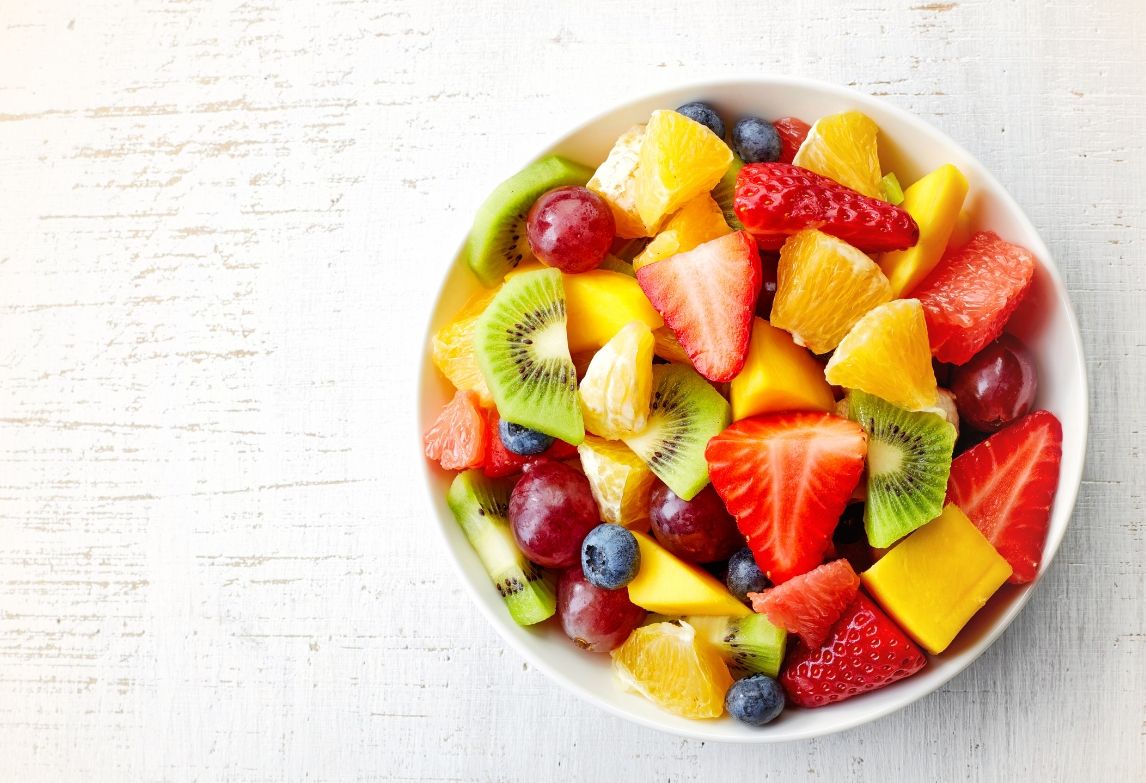Fibre is often under-appreciated when compared to other macro and micro nutrients. Most people fall into the trap of thinking that the only purpose for fibre is maintaining regularity, but this is selling things short. However, fibre plays multiple roles in the body, beyond that of promoting regularity.
Two Types of Fibre
Dietary fibre, also known as roughage or bulk, is unique when it comes to how the body processes it. Unlike, fats, carbs or proteins, fibre passes through the digestive system relatively intact until it leaves the body. This plays a role in how it supports various health functions.
Not all fibre is alike, however, and different types have different properties. The two main categories are soluble fibre and insoluble fibre. Here’s a basic breakdown of the differences.
- Soluble fibre: When combined with water, soluble fibre dissolves into a gel-like material. This helps it play an important role in overall digestive support.
- Insoluble fibre: Insoluble fibre doesn’t dissolve in water, but it still helps your digestive function. This draws water into the stool, supporting regularity. Insoluble fibre is behind much of the common benefits that we think of when talking about fibre (1).
When it comes to insoluble fibre vs. soluble fibre, the two aren’t in competition with each other. Most plant foods have both types to some degree, but some have more of one than the other. And just like fats and protein, you want to have as many diverse sources as possible.
The Benefits of Fibre
Fibre helps your regularity by drawing water into your intestines, but it can also help you in other ways. For example, some studies report that having a fibre-rich meal means that you may feel full earlier. This could be a potential asset when it comes to portion control, a major struggle for people trying to lose weight (2). This isn’t the case for all fibres – which makes it all the more important to pursue a balanced mix of plant foods and grains.
There are other potential areas of health that fibre can support as well, but the exact nature of just how it works isn’t yet as clear. Here are some of these areas:
- Supporting good bacteria: Perhaps you’ve heard of the probiotic movement. If not, here’s a brief explanation. Our body is filled with millions of tiny microorganisms, and keeping them healthy and balanced can be good for our health. Many probiotic supplements supply more of these “good bacteria,” but fibre helps in a different way. Remember that insoluble fibre doesn’t break down like proteins and fats do? This means that it passes through the large intestine, where probiotic bacteria are located. Dietary fibre acts as what is called a prebiotic, feeding the bacteria and supporting many health functions (3).
- Heart support: A major contributor to heart issues is high levels of blood LDL cholesterol. Several studies have shown that overall, a fibre-rich diet may contribute to lower levels of cholesterol in the blood. To be clear, this doesn’t mean that fibre is a replacement to a heart-healthy lifestyle. However, it may be a nice part of it (4).
- Blood sugar support: In the same vein as heart support, fibre-rich foods have a lower glycemic index. This means smaller spikes in blood sugar if you have carbohydrates that are also rich in fibre. Again, this isn’t a substitute for other forms of care, but it is a nice bonus on top of everything else you are getting from your fibre (5).
Good Sources of Fibre
It’s clear that fibre is great for you, but most people aren’t getting enough, with upto 70% of Australians not meeting their daily Adequate Intake of fibre (6). Government guidelines suggest that men should aim for 30 grams of fibre per day, while women should look to get 25 grams per day (7).
Meeting this goal requires a large selection of plant foods. Here are a few top options:
- Whole-grain products like breads and cereals
- Fruits like pears and berries
- Vegetables like broccoli, artichokes and kale
- The legume family, especially beans
- Nuts and seeds of all kinds
As mentioned before, different categories tend to have more types of fibre than others. For example, oats, carrots and apples are particularly good sources of soluble fibre. Then you have foods like wheat, green beans and potatoes that have more insoluble fibre. Some, like beans, are good sources of both. The good news is that you should already be eating plenty of fruits and vegetables as a foundation of a healthy diet. Think about mixing them up if you feel like your fibre is lacking.
On top of the great food options here, some foods have additional fibre added. This is common for items like granola bars or yogurt. This is handy if you want to keep up your fibre-rich diet, but need something more portable. Just be sure to read the labels before you buy.
Overall, fibre is an integral part of a wholefoods diet and has been linked with a number of benefits including a lowered risk of heart disease, better microbiome status, increased satiety and glycaemic control. Ensuring adequate fibre is an easy way to enhance the nutrition and health-giving qualities of our diet.
References
1. Anderson JW, Baird P, Davis RH, et al. Health benefits of dietary fiber. Nutr Rev. 2009;67(4):188-205.
2. Turner ND, Lupton JR. Dietary fiber. Adv Nutr. 2011;2(2):151-2.
3. Macfarlane S, Macfarlane GT, Cummings JH. Review article: Prebiotics in the gastrointestinal tract. Aliment Pharmacol Ther. 2006;24(5):701-14
4. Pereira MA, O’reilly E, Augustsson K, et al. Dietary fiber and risk of coronary heart disease: A pooled analysis of cohort studies. Arch Intern Med. 2004;164(4):370-6.
5. Weickert MO, Pfeiffer AF. Metabolic effects of dietary fiber consumption and prevention of diabetes. J Nutr. 2008;138(3):439-42.
6. Fayet-Moore F, Cassettari T, Tuck K et al. Dietary fibre intake in Australia. Paper I: Associations with demographic, socio-economic and anthropometric factors. Nutrients. 2018; 10(5): 599
7. Dietary Fibre. https://www.nrv.gov.au/nutrients/dietary-fibre (accessed 12 July 2019).
BY ENZYMEDICA
Enzymedica is a Florida based company that offers the highest-quality enzyme products possible. Today, as one of the global leaders in the industry, Enzymedica strives to ensure that their products are clean, sustainable and highly effective. Find out more about Enzymedica.







Leave a Reply
Want to join the discussion?Feel free to contribute!